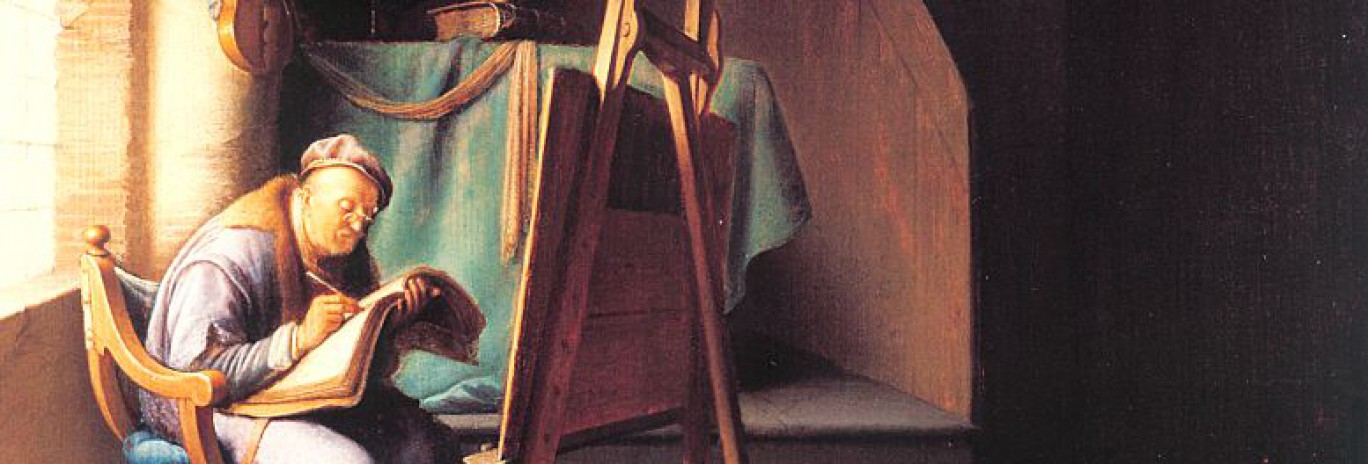Events
TECHNICAL ART HISTORY COLLOQUIUM XVI: A selection by Jeroen Stumpel
Date and time: 7 December, 2017 – 15:00 – 17:00
Location: Drift 21, Utrecht – Room Sweelinckzaal (0.05)
The Technical Art History Colloquium is organised by Sven Dupré (Utrecht University and University of Amsterdam, PI ERC ARTECHNE), Arjan de Koomen (University of Amsterdam, Coordinator MA Technical Art History), Abbie Vandivere (University of Amsterdam, Coordinator MA Technical Art History & Paintings Conservator, Mauritshuis, The Hague), Erma Hermens (University of Amsterdam and Rijksmuseum) and Ann-Sophie Lehmann (University of Groningen). Monthly meetings take place on Thursdays. The sixteenth edition of the Technical Art History Colloquium is organised by Jeroen Stumpel on the occasion of his emeritation at Utrecht University. Jeroen Stumpel has invited Paul Taylor (The Warburg Institute, University of London) and Marjolijn Bol (Department of History and Art History, Utrecht University) to speak on technical art history.
Hatching and Technical Art Criticism
Paul Taylor (The Warburg Institute, University of London)
According to the Oxford English Dictionary, hatching is: ‘The action of drawing, cutting, or engraving close parallel lines, esp. in order to produce the effect of shading.’ This definition works well enough for the sort of hatching one finds in the late 17th century, but in earlier periods hatching was more ambitious. In the hands of leading exponents of the technique it could also express volume, convey the character of materials, evoke texture and create pictorial unity of various kinds. Much of this talk will involve a detailed analysis of methods of hatching used by artists such as Dürer and Raphael, but we will also briefly chart the slow decline of hatching over the 16th and 17th centuries, until it came to be no more than a mechanical method of shading. We will see that even in order to characterise the nature of hatching it is necessary to use expressive, value-laden language; and this will raise questions about whether a history of techniques can ever be a neutral description of pictorial methods.
The Emerald and the Eye: On Sight and Light in the Artisan’s Workshop and the Scholar’s Study
Dr. Marjolijn Bol (Department of History and Art History, Utrecht University)
From Egyptian times until today, the emerald has been one of the most precious stones money could buy. Today, the emerald is known as the variety of beryl that receives its green colour from traces of chromium, and sometimes vanadium. It is prized for its colour, clarity, rarity and hardness. In the premodern period, a number of green gemstones could be classified as smaragdos. These include today’s emerald, but also less costly stones such as malachite and green turquoise. Despite the difficulties in establishing the exact mineral composition and origin of the emeralds described in historical sources, the most precious smaragdi have always been valued for the same qualities as our emeralds today. It was these emeralds that were the subject of a wide variety of artisanal practices attempting to enhance or imitate the gem’s beautiful translucent green colour. Because of the appreciation of the emerald, it appears that it stimulated not only interesting techniques for its imitation, but also theories about its genesis in nature, its value and its use. Indeed, the emerald’s green translucent colour was not just considered intriguing and beautiful, but also of practical use as an aid to the human eye. As such, the special optics of the emerald had a surprising and enduring impact on the history of furnishing both the scholar’s studio and the artisan’s workshop.
In order to ensure that you will be accommodated, RSVP to j.briggeman@uu.nl.
Download the invitation in PDF here: Technical Art History Colloquium – 7 December


